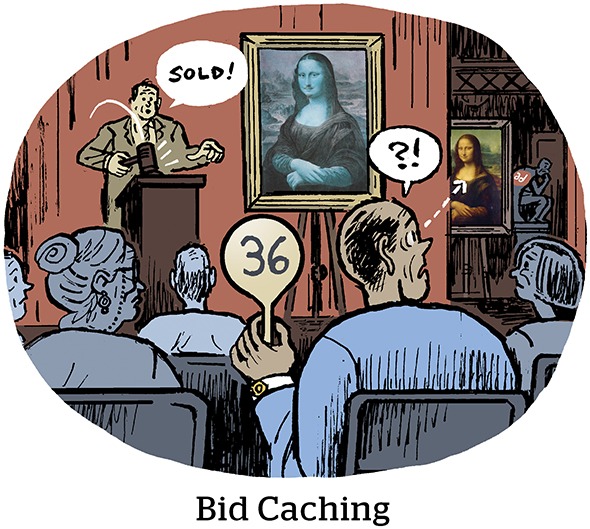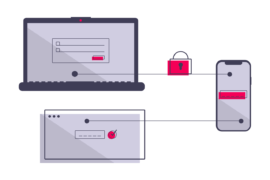Ever since Index Exchange’s revelation about using ‘bid caching’, ad tech industry has been split about the controversial practice. Learn what bid caching is and why it’s so divisive.
For marketers who practice the real-time bidding model in advertising, understanding where and why users convert is crucial. Digital advertising is based on the idea of targeting users.
The ability to target is the sole criteria basis which they decipher the ad positioning and put the bid value (their money). Right people, right messaging, right time ∝ Quality Conversions.
Through bidding, marketers attribute their CPC/CPM to niche platforms where they know their core audience resides. Recently, a feature referred to as ‘bid caching’ was introduced by Index Exchange, an advertising marketplace where digital media platforms sell ad impressions.
What is bid caching?
By nomenclature, bid, a proposed value for something you want to acquire + caching, the storage of data for future use collectively sums up to bid caching—the storage of primary bid information applied at a subsequent point in case the original RTB request is not met.
In definition, bid caching reuses a bid you’ve submitted for one auction in future auctions. In case you fail to win the bid, your saved bid is applied in a subsequent action with possibility of a slightly different targeting.
The introducers of bid caching claimed the feature was meant to harness the likely-to-get-missed bidding opportunities for buyers. However, right after the disclosure, the practice was seen as a beacon in the ad exchange industry.
Also read: How to Setup Bid Caching in Prebid
The Function of Bid Caching
Ad bidders and DSPs (demand-side platforms) realize their chances of losing bids due to heavy competition are quite high. Consequently, their ad impressions are at stake.
In the intent of Index Exchange’s bid caching exercise, they were simply making the ad impressions get served successfully.
The idea was to allow buyers and DSPs to win their bids where otherwise the probability of participation is minimal due to ever-growing competition, latency, and other constraints of ad exchange networks.
Here’s how it worked: your business viz. Abc bid to showcase its brand’s ad impression(s) specifically to users on the homepage of xyz.com, a publisher website.
There are chances you could experience an outbid due to tight competition in your industry.
Here via bid caching enabled, in case you actually lose your proposed bid, your ad would serve impression(s) on the next page session of xyz.com where the users navigate to, instead of on the homepage you had originally bid for.
In Index Exchange’s argument, they were leveraging ‘caching’ (a history of data stored in the memory) applied on the bidding algorithm to strengthen the chances of winning bids.
Alongside winning bids, the motive was to impart superior user experience and empower advertisers to encapsulate the audience they resonate with.
The Problem with Bid Caching
Despite the initiatives were taken for sake of higher winning chances and better buyer/viewer experience, the fundamentals of bid caching have been surrounded by bold question marks.
The point where issues on layers of data rose was when audits were ran. These audits proved that if not the parent URL, for which the bid was made primarily made and then lost, eventually the next URL in the same user session were being served.
The commotion about bid caching stemmed from the fact that it was being deployed for the buyers, on the buyers’ ad account, but without the buyers being informed.
Nearly 44% to 50% of impressions (for buyers) served under surveillance of Index Exchange showed traces of bid caching.

Inclusion of the aforementioned counter-attacked the intents of Index Exchange in terms of ethical protocols between them and their clientele of buyers.
Myths about bid caching, debunked
- Is a common exercise and it’s OK to do it
Drew Bradstock, SVP of product, Index Exchange quoted, “we thought this was an industry practice.”
Renown programmatic and ad exchange infra companies like MoPub, Rubicon Project publicly stated they never have engaged in bid caching. Even PubMatic and OpenX showed its bewilderment.
It was found uncommon to use this practice as it provoked a sense of dishonesty and breach of transparency from the SSP’s (supply-side platform) side.
In crux, most ad exchange influencers stated they felt like ‘you are choosing to buy something, but you end up paying for something else.’ - Helps buyers win bids and yield results
Marketers/buyers are often looking to target users on peculiar web pages (not anywhere on the entire website) which they know can yield the closest relevance to their intent.
Accordingly, their thought process and overall psychology behind the choosing their target for achievement of end conversion is clearly envisioned.
However, during the reign of bid caching, buyers’ actual ad impressions used to preview on the next landing page of users’ sessions.
This practically meant buyers had lost control over their targeting.
The articulation of the fact that bid caching increases the chances of saving lost bids may prove right, but at the cost of sacrificing real-time value proposition and contextual user interactions and microinteractions.
This proved to be a malfunction as by this time, despite winning the bid, buyers’ intent and targeting were severely adjusted. Worse, the buyers didn’t even know this was happening. - Leaves the targeting and brand safety untouched
Perhaps the most important argument on bid caching was how it messed up the targeting and brand safety — the foundation of successful advertising.
For instance, Abc, a cloud telephony venture, bid $10 to serve its ad impressions on a specific news post viz. xyz.com/efgh of a business news portal.
Their campaign was exclusively devised at the time when the news update about ‘call recording availability made mandatory for stockbrokers’ was rolled out.
This time was an opportunity for cloud telephony providers to derive ROI by encapsulating a decent audience size of stockbrokers who’ll now need professional call recording systems.
Given the scenario, in case Abc lost its bid to other cloud telephony player who bid a higher value at the same time and for the same page, Abc’s ad impressions ended up getting served on the subsequent page, xyz.com/pqrs.
The subsequent page could be anything say ‘the truth of rising coal prices’ or ‘is chinese e-commerce seeing a downfall?’ which is of 0% relevance to the intent Abc had planned its campaign around. - Has no consequence on the marketing spend
The unforeseen placement of ads on different pages most likely caused the buyer to be in an overpaying situation because of difference in viewability of pages and placements.
In ally to the above campaign, where Abc had bid $10 for xyz.com/efgh and ended up serving ad impressions on xyz.com/pqrs, there are chances the bid value for this page may have varied due to context and intent quality.
Unless the exchange platform offered the leverage of budget and frequency capping, buyers/ marketers feared there was no guarantee their ads were being served on the decided page and in the defined budget.. - Is OpenRTB standard compliant
In the announcement, Index Exchange justified their launch of the bid caching technology by stating ‘bid caching—a feature built and designed in accordance to industry guidelines (OpenRTB 2.5, section 7.2).’
Deep down, the documentation mentions about the purpose of OpenRTB project and protocol standards emphasizing on open industry communication between buyers of advertising and publishers of inventory.
However the OpenRTB standard was a detailed manifesto, at any point it did not enlighten readers about putting bid caching practice into effect.
Concept v/s controversy: Thoughts of industry players
The arrival of the bid caching concept quickly alarmed trust issues in the ad tech industry.
Bid caching is fundamentally wrong. You’re paying for something else. It’s like going to supermarket and getting beans, and at checkout, they swap it out for something else.
— CEO, London Media Exchange
A few publishers sympathized with the latency justification presented by Index Exchange:
Watching their revenue and CPM since Sunday, there has been no major fluctuation to Index, so I don’t think it gave them as much of an advantage as might have been thought. I would agree with their statement that this may become the norm as publishers focus on page speed.
— Anonymous
Thought, a dominant portion reviewed bid caching as amiss.
I was surprised that this whole practice was happening. I had never heard of bid caching before this. It is murky at best. From a buyer perspective it means you’re getting stuff you haven’t been bidding on.
— Stefan Havik, MD, Dentsu Aegis-owned M1 and Amnet
While latency is a challenge in this environment, we feel this solution falls short of the market’s requirements for transparency and welcome Index Exchange pausing this feature. There is a need for more formal governance in this area on acceptable practices and agencies.
— Simon Harris, head of programmatic activation, Amplifi
FAQs
An auction caching occurs when a lost bid from one auction is used to fill a subsequent auction – without the buyer knowing, and with slightly different ad targeting information.
Server-to-server connections enable Open Bidding, which is faster than header bidding based on page tags, resulting in decreased page latency and increased ad viewability and yield. The auction takes place on the ad server and not on the user’s browser.
Programmatic advertising with header bidding is an advanced technique. By utilizing this technology, publishers can simultaneously share adspace with multiple supply-side platforms (SSPs). The process differs from sequential or waterfall bidding, in which the topmost ad exchanges are prioritized.

Shubham is a digital marketer with rich experience working in the advertisement technology industry. He has vast experience in the programmatic industry, driving business strategy and scaling functions including but not limited to growth and marketing, Operations, process optimization, and Sales.



![CTV vs OTT Advertising: Which one is Right Pick for Publishers? + [6 Bonus Strategies] Ott vs Ctv](png/featured-image-270x180.png)



